2016 GEC Catalyst Awards
2016 GEC Catalyst Awards
The 2016 Global Electronics Council (GEC) Catalyst Award winners were recognized at the Electronics Goes Green Conference in Berlin, Germany, for their accomplishments in “innovations in resource reduction.” AMD won the 2016 Catalyst Award for “Catalyzing Impact at Scale.” PuzzlePhone won the 2016 Catalyst Award for “Catalyzing Disruptive Innovation.” Additional information about AMD’s and PuzzlePhone’s winning nominations, as well as those from the other Finalists, is available below. In 2015, Dell, Inc. won the inaugural Catalyst Award for its innovative use of closed-loop plastics.
2016 Catalyst Award Winners
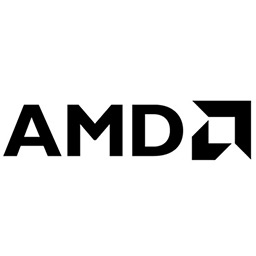
AMD 6th Generation A-Series Accelerated Processing Unit (APU)
Advanced Micro Devices (AMD) designs component processors for high-performance computing, immersive technology and datacenters. It and other semiconductor companies have long benefited from Moore’s Law, the doubling of the number of transistors on a chip about every two years as manufacturing technology advances allow for smaller and smaller transistors, and smaller computer chips. Historically, each smaller generation of these chips would consume fewer resources while providing ever greater performance. However, the near clockwork improvements derived from Moore’s Law have slowed substantially in recent years. This stems from the fact that the miniaturization of transistors is now bumping against physical limits, affecting the design parameters of processors. As transistors get smaller, leaking power current becomes a greater engineering challenge because transistor threshold voltages have been reduced to the point where the devices don’t completely shut off. This breakdown in Dennard scaling has resulted in higher power consumption for the highly integrated, high-performance devices that consumers need in medical, research, financial and other critical industries. Even so, AMD is on track to achieve a stretch goal to dramatically improve the energy efficiency of its microprocessors by 25 times from a 2014 baseline—a fundamental part of the company’s business strategy called the 25×20 Initiative. In 2015, AMD released the 6th Generation A-Series Accelerated Processing Unit (APU), codenamed “Carrizo”. Carrizo consumes substantially fewer natural resources both in production and in use compared to its predecessor, resulting in a much smaller impact on the environment. This achievement is a result of intense engineering work that led to innovations including a new memory architecture, power efficient silicon to optimize voltage and reduce power consumption, high density libraries to reduce travel paths and reduce electrical leakage from the circuits, and intelligent power management that dynamically adjusts power in response to the tasks being run. When taken together, Carrizo achieved a 2.4 times increase in energy efficiency compared to the previous product. And significantly, upgrading to Carrizo from the previous product results in a 46 percent reduction in life-cycle greenhouse gas emissions, based on a three-year service life. AMD has seen increasing momentum for the Carrizo 6th gen APU, especially for laptop computers. This is evident based on new design wins with technology manufacturers (OEMs), new large-scale commercial deployments, and the growing adoption of AMD technology that improves the visual experience during video playback and gaming. The new Carrizo processor offers all-day battery life, and excellent performance. As always, there is extreme competitive pressure in the computer market for new processors that provide even greater performance while minimizing power consumption. This is made more challenging due to the slowdown in Moore’s Law. Gains that once were largely a byproduct of manufacturing gains now must be augmented with advanced engineering and a total company commitment. Further gains will come from improvements in semiconductor architecture and innovative power management, as well as manufacturing process optimization. These gains will be embodied through new processor generations that will be released by AMD over the next several years, and with even greater energy efficiency improvements. With product releases on the company’s roadmap, AMD is on track for achieving the goal to improve APU energy efficiency 25 times between 2014 and 2020, that will lead to new and immersive digital experiences while at the same time limiting energy use and environmental impact.

International Telecommunication Union
PuzzlePhone, The Upgradeable Modular Smartphone by Circular Devices Oy
2016 Catalyst Award Finalists
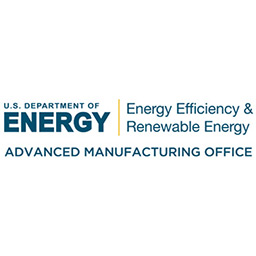
Superior Energy Performance (SEP) Certification for Increased Energy Productivity under ISO 50001
우수한 에너지 성능®(SEP™)은 ISO 50001 글로벌 에너지 관리 시스템 표준을 충족하고 검증된 에너지 성능을 달성하는 에너지 관리 시스템을 구현하는 산업 시설과 상업용 건물을 인증합니다. 에너지 관리 시스템(EnMS)은 시설이 에너지 효율을 체계적으로 추적, 분석 및 개선하기 위한 정책과 절차를 수립하는 데 도움이 됩니다. ISO 50001 에너지 관리 시스템 – 40개국 이상의 참여를 통해 개발된 사용에 대한 지침(또는 단순히 "ISO 50001")이 포함된 요구 사항은 EnMS에 대한 전 세계적으로 인정되는 모범 사례입니다. SEP는 전자 제품 공급망 전반에 걸쳐 에너지 효율을 높이고 온실가스(GHG)를 줄이는 귀중한 도구입니다. 지속 가능성 노력은 일반적으로 생산 공정이 제품의 GHG 배출량의 대부분을 차지할 수 있더라도 제품 또는 재활용성의 최종 사용에 중점을 둡니다. 예를 들어, Apple iPhone 6s의 생산은 제품의 GHG 배출량의 84%를 차지하며, 고객 사용률은 10%입니다. 이 예제는 원자재 추출, 다양한 공급업체의 부품 생산, 제품 제조, 유통, 소매 및 고객 최종 사용 등 제품의 전체 수명 주기 내의 모든 단계가 총 에너지 및 탄소 발자국에 기여한다는 것을 보여주는 많은 단계 중 하나입니다. 공급망은 복잡하고 다각적이지만 공급업체와 제조업체의 생산 공정은 제품의 에너지와 탄소 발자국을 줄일 수 있는 좋은 기회를 제공합니다. 전자 제품 OEM은 공급업체와 협력하여 SEP를 사용하여 숨겨진 에너지 절감 기회를 공개하고 공급망을 따라 생산 공정 중에 에너지 성능을 지속적으로 개선할 수 있습니다. 체계적인 에너지 관리는 모든 제품의 공급망을 따라 에너지 소비와 온실가스(GHG)를 줄이는 입증된 전략입니다. SEP 인증 프레임워크는 ISO 50001 국제 표준을 사용하여 공급망을 따라 있는 기업이 EnMS를 구현하여 지속 가능한 방식으로 에너지 성능을 개선할 수 있도록 돕습니다. 약 50개의 시설이 참가하고 44개의 시설이 SEP 프로그램(미국 38개, 멕시코 4개, 캐나다 2개)에 인증되었습니다. 이러한 시설은 SEP 프로그램이 제공하는 강력하고 데이터 중심의 에너지 성능 개선 결과에서 가치를 찾습니다. SEP는 에너지 성능과 에너지 비용 절감을 크게 개선하고 유지하여 투자 수익률이 매우 높은 것으로 나타났습니다. EnMS 를 구현하는 것은 기업의 대규모 투자로 인식될 수 있지만, 에너지 및 비용 절감 측면에서 인증된 시설에서 긍정적인 회수를 보였으며, 지속적인 분석에 따르면 구현된 SEP의 비용은 계속 감소하고 있습니다. 예를 들어, SEP 인증 시설 전반에 걸친 분석에 따르면 SEP 구현을 시작한 지 15개월 이내에 평균 12% 에너지 비용이 절감되었으며, 비용 또는 저비용 운영 조치를 사용하여 연간 36,000달러에서 938,000달러의 비용을 절감할 수 있었습니다. SEP의 제3자 에너지 절감 검증은 투명한 프로세스를 통해 측정 가능하고 신뢰할 수 있는 절감 효과를 제공합니다. 프로그램의 초기 데모의 성공은 SEP에 대한 관심이 증가하고 프로그램이 계속 확장되고 있습니다. SEP는 인증 횟수와 프로그램의 영향을 늘리기 위한 여러 단기 및 장기 이정표를 가지고 있습니다. 내년에는 여러 인증이 진행 중입니다. DOE는 또한 7개의 주요 수중 및 폐수 처리 기관과 협력하여 2017년 각 조직에서 최소 한 개의 시설을 인증하는 것을 목표로 시범 프로그램에서 SEP 프로그램을 구현하는 에너지및 효율성 이점을 입증하고 있습니다. DOE는 또한 전자 표준 개발자와 협력하여 하나 이상의 공급업체와의 OEM 파트너십을 통해 SEP 통합을 고려하고 있습니다. DOE는 제품 지속 가능성 표준에 대해 데이터 센터 서버(현재 작업 중인 초안)에 대한 NSF 426 표준을 포함하고 있으며 DOE는 또한 개발자와 협력하여 UL 110 – 휴대폰 및 IEEE 1680.1 – 데스크톱 컴퓨터와 같은 추가 표준을 위해 협력하고 있습니다.
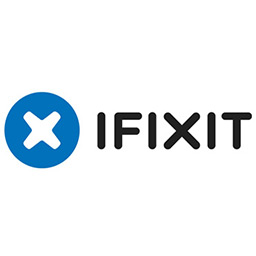
Empowering Repair, Enabling Reuse, Conserving Resources
iFixit is the largest free repair manual in the world. It’s nearly 20,000 guides have taught millions of people how to fix complicated electronic devices that might have otherwise gone into the landfill. The organization concentrates on electronics because e-waste is one of the fastest growing waste streams on earth. Teaching consumers how to repair their own electronics gives them an alternative to the dump. Moreover, repair is a more effective end-of-life strategy than recycling. Keeping a device out of the shredder and in use conserves the energy and materials that went into manufacturing the device. Electronics are some of the most resource intensive products humans know how to make. Despite the heavy environmental impact, we are consuming more electronics faster than ever before. The best shot we have at reducing the environmental impact of our electronics is to keep them around for as long as possible. iFixit is a complete repair resource to help owners extend the life of their electronics, ultimately conserving raw materials and reducing the demand for more electronics. iFixit has made the Inc. 5,000 list of fastest growing companies several times. The company designs specialty electronics repair tools and kits based off of data gathered from creating thousands of repair manuals. The company also sources and sells replacement parts. iFixit has pioneered several key partnerships with recyclers and universities, in order to keep expanding iFixit as a free repair resource. The result is that iFixit has been able to maximize its impact, while still keeping its team comparatively small. Despite the project’s success, iFixit has encountered several challenges to teaching DIY repair. Manufacturers haven’t been incentivized to integrate repairable, upgradeable design into their device development strategies. But as major manufacturers transition towards less upgradeable, more integrated designs—solidifying the link between repairable technology and sustainable technology has never been more important. It has taken iFixit more than a decade of advocacy, but repair is beginning to make inroads back into the global consciousness. And iFixit is actively participating in discussions involving the Circular Economy and encouraging manufacturers to incorporate repairable designs into their products. In the coming years, iFixit expects to continue to expand the number of free repair guides it offers to the public and will work to strengthen the ecosystem for repair. The project’s short term goals include more advocacy-related initiatives—including legislation—to promote repairability in devices. Its long term goals include building a more robust free resource for repair.
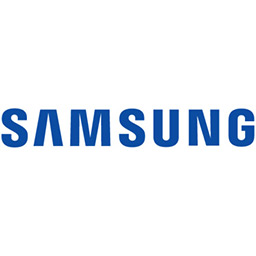
Samsung Screwless 2016 Curved Full HD TV
The UN55K6250 Curved Full HD TV is a milestone product for Samsung because it is engineered as environmentally the best in class. From the material sourcing, production and to the end of a product’s life cycle, Samsung’s focus on being green is unmistakable. With the new UN55K6250 Curved Full HD TV, Samsung continues to demonstrate an innovative balance of superior technology with sound sustainability practices. Industry’s first, Samsung uses ‘polyketone’, a new environmentally-preferred material made from carbon monoxide. At 1.5kg, polyketone greatly reduces greenhouse gas emissions compared to PC (Polycarbonate) (6kg) and ABS (3.1kg). About 31g of polyketone will make up the speaker in the nomination model series. In addition, this nomination uses another major milestone of source reduction for Samsung’s television design: screwless rear cover. On Samsung’s 55 inch television, there are 31 screws just on the rear cover alone. With Samsung’s innovative greener design, we removed these screws from the rear cover and instead use a snap closure method. This screwless design was no question for market viability since it reduces sources, cost, production and labor time, disassembly labor time during recycling, and even lowers the energy consumption at the manufacturing facility by eliminating the use of electric screwdriver. We ambitiously plan to apply this screwless rear cover on all but one series of televisions that will be launched in 2016, that’s 37 individual models! And the first of the screwless design rear covered television has already been made commercially available in March. Multiplying to the total number of volume forecasted at millions, the reduction in the environmental footprint is only at large. This year, Samsung will explore polyketone in the speakers of UN55K6250 and its series for the feasibility of potentially expanding to more models and other application in 2017. One of the new challenges will be to work closely with the polyketone supplier to source carbon monoxide from already emitted source such as industrial byproducts instead of creating new carbon monoxide while maintaining the quality of polyketone in order that Samsung does not compromise the quality of our products, a commitment we promise to our customers. We are thrilled by this opportunity to share our successful innovative-sustainability story because a continuous market challenge is to raise awareness to consumers in order to aid their purchasing decision to the environmentally-preferred products. Nonetheless, Samsung is enthusiastic about further reducing GHG emission thru every unit of UN55K6250 produced thru its screwless rear cover and the use of polyketone plastic. Previously Samsung has already reduced in sources by applying recycled plastic, by using soy ink that is high-density than regular ink, and in paper packaging from slimmer and lighter product designs. By far Samsung Screwless Curved Full HD Model UN55K6250 represents the next evolution in sustainable product development.
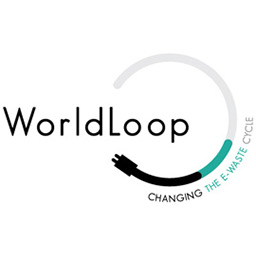
Resource Recovery Sub-Saharan Africa Connecting to Global Markets
WorldLoop works to promote responsible use, reuse and recycling of IT devices. This not only extends the original life of a product whose most intensive resource consumption is accounted for in the production phase of its life but also ensures that at the end of its intended life, the resources used can go back into new material production, avoiding landfills or incineration. WorldLoop partners with social entrepreneurs who work as e-waste collectors and recyclers in Africa by offering financial support, technical and managerial capacity building, and facilitating the reverse logistics of complex and hazardous fractions under the ‘Best of Two Worlds’ approach1 (Bo2W). First, seed funding is provided after the presentation of a strong business plan. Then WorldLoop provides technical training on how to test and repair products for reuse and to determine their reuse potential of ICT products and safe store and dismantle techniques for resource recovery. The social entrepreneurs also receive ongoing business management training to drive marketing, HR and accounting needs including cashflow management. Finally, WorldLoop facilitates the legal transboundary movement logistics related to shipping complex and hazardous waste ensuring that all relevant stakeholders and competent authorities are involved. WorldLoop has operationalised the Bo2W model combining local collection and dismantling efforts in developing countries with best-available-technologies for advanced recycling solutions available in industrialised countries. By providing an alternative to primitive recycling practices, and a solution for the non-valuable toxic material, WorldLoop creates a win-win-win for the economy, environment and society. WorldLoop is therefore an innovative social enterprise that truly helps in decreasing environmental and health threats by sharing savoir-faire and offering training that will have immediate positive impacts.
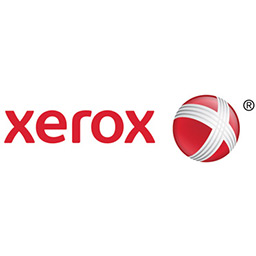
Resource Reduction of Toner Supplies through Life Cycle Innovation
Xerox의 지속 가능성은 비즈니스 비용보다는 비즈니스를 수행하는 우리의 방식입니다. 우리의 목표를 달성하고 고객의 수단에 양질의 지속 가능한 제품을 제공하는 것은 현상 유지를 넘어 혁신하기 위해 노력하고 있습니다. 제록스의 2016 촉매상 후보지명은 제록스가 세 가지 중요한 이니셔티브를 통해 달성한 지속 가능한 이점을 강조합니다. 이러한 이니셔티브는 수명 주기 혁신을 통해 토너 카트리지 및 컨테이너와 관련된 리소스를 줄이는 반면, 오늘날 많은 솔루션은 자원 사용을 줄이기 위해 재사용 또는 재활용에만 의존합니다. 첫째, 많은 제록스® 토너 컨테이너에 구현된 설계 변경으로 컨테이너 제조에 필요한 원료 자원의 양이 평균 26% 줄어듭니다. 둘째, 토너 용기를 제조하는 데 필요한 에너지의 양을 줄이는 일부 제록스® 토너 카트리지에 플라스틱 수지 재료 변화가 구현되었습니다. 새로운 플라스틱 수지는 1,000kg의 재료당 8.8기가줄로 에너지를 생산하므로 온실 가스 배출이 줄어듭니다. 이러한 환경 적 이점 외에도 이 수지 변화와 관련된 공급 보증 및 비용 혜택도 있습니다. 마지막으로, 제록스 ® 토너 카트리지 및 용기의 수명이 다한 관리를 위해 혁신적인 재사용, 재활용 및 재제조 공정이 구현되었습니다. 제록스는 토너 소모품의 책임 있는 종료 처리를 용이하게 하면서 비용 균형을 맞추기 위해 에코박스 프로그램을 개발했습니다. 이를 통해 처녀 재료에 대한 부담이 감소하고, 신제품 제조와 관련된 비용 절감, 운송 거리 감소 등이 있습니다. 품질 및 압력 테스트를 통과하는 모든 반환 된 공급장치는 재사용 또는 재제조됩니다. 테스트에 실패한 모든 소모품은 매립에 폐기물이 없는 신제품재사용용 재료를 회수하는 특허받은 재료 분리 공정을 거닐게 됩니다. 지난 4년 동안 제록스® 토너 공급원료는 총 9억kg, CO2 eq 400만 kg 이상으로 감소했습니다. 세계는 원자재 매장량의 단일 유한 자원과 온실 가스 배출의 부담을 공유하기 때문에 자원 감소의 긍정적 인 효과는 전 세계적으로 실현 될 수있다. 이 이니셔티브는 또한 포스트 소비자 자료에 의존하는 대신 자원을 줄이는 것, 긴장된 자원에 대한 부담을 줄이며, 불우한 가정에 공급을 제공하는 종신 가공 업체와의 파트너십을 포함한 활동으로 인해 사회적으로 지속 가능합니다. 모든 새로운 기술, 혁신 또는 프로세스와 마찬가지로 이점과 함께 어려움과 잠재적 인 절충이 있습니다. 환경에 미치는 영향을 줄이기 위해 혁신할 때 궁극적인 과제는 혁신과 관련된 금전적 비용을 극복하는 것입니다. 그러나 Xerox는 자원 절감 이니셔티브가 고객에게 추가 비용을 부담하지 않으므로 모든 관련 지속 가능성 이점을 실현할 수 있도록 보장했습니다. 전반적으로, 제록스의 2016 촉매 상 지명은 제록스® 토너 공급에 대한 라이프 사이클 자원 감소 혁신과 관련된 환경, 경제 및 사회적 혜택을 강조합니다.

